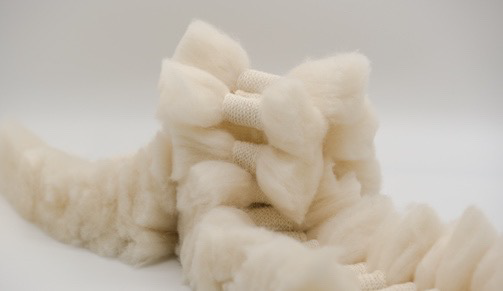Angela Sherry, Jane Scott
Fibre Highways expands upon recent studies into bacterial motility on fungal highways to investigate fibre highways – the directional movement and dispersal of microbes on a range of natural and synthetic fibres. During the research a combination of growth experiments, visualisation technology, DNA sequencing and bioinformatics were used to investigate bacterial adhesion to textile fibres and determine whether bacteria can travel on fibre highways. Our work demonstrates that these highways exist, and that microbes respond differently to specific fibre types. However, our interest lies not only in the movement of bacteria on textiles, but the potential to use this knowledge to design fabrics that could seed environments with particular microbial communities.
Microorganisms play a significant role in the removal of a wide range of pollutants from the
environment. Both bacteria and fungi use enzymes to break down toxic components,
converting them into alternative compounds, in a process known as bioremediation. Fibre Highways focuses on the challenge of hydrocarbon pollution caused by oil spills, concentrating on the potential for textile:microbe hybrids to provide sustainable solutions for bioremediation.
From a design perspective our approach has been to develop a multi-kingdom textile ecosystem, using knitting as a tool for conceptual thinking, a microbial habitat, a transport system, and an active agent in remediation. Fibre Highways anticipates how a symbiotic relationship can be developed between knitted fabrics and microorganisms, selecting specific textile materials and knitted structures to culture responsive living textiles that support microbial communities.



